Welcome to the Blog.
9 Steps to Repurposing Your Podcast Into a Blog Post in Less Than 30 Minutes

If you’re running a podcast and not turning that content into a blog, you’re leaving visibility on the table. Blogging gives your episodes a second life—it drives SEO, helps your audience find you on Google, and saves you from reinventing the wheel. The best part? You don’t need hours. With the right tools and a repeatable process, you can repurpose a podcast into a blog in less than 30 minutes (not including actually putting it on wordpress/squarespace).
I’ll show you the exact workflow I use for my Being Better Everyday podcast—tools, prompts, and all.
The Tools I Use to Assist in the Process
Here are the paid tools that make this process fast and seamless – it is recommended to have some version of these tools in order for this process to work.
Ubersuggest – my favorite tool for keyword research. They have a lifetime membership for under $300 that makes it accessible as a keyword research/SEO tool. If you are doing your own keyword research and not outsourcing, it’s a must.
ChatGPT – my go-to ‘assistant’ to getting things to 80%. I do pay so I get better outputs and can create better training on what my individual brand voice is.
Descript – where I edit my podcast and export transcripts. There are others out there but this is what I use.
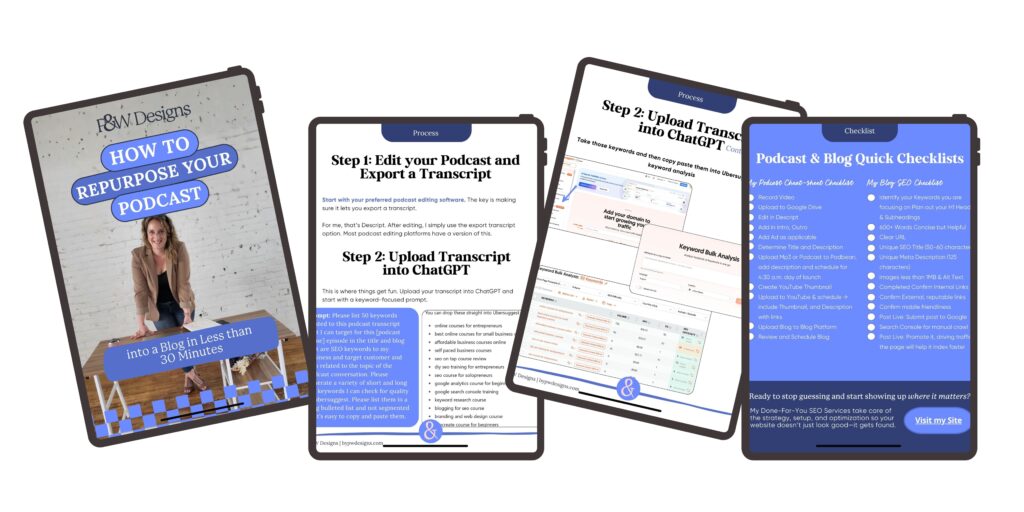
Step 1: Edit your Podcast and Export a Transcript
Start with your preferred podcast editing software. The key is making sure it lets you export a transcript.
For me, that’s Descript. After editing, I simply use the export transcript option. Most podcast editing platforms have a version of this.
Step 2: Upload Transcript into ChatGPT
This is where things get fun. Upload your transcript into ChatGPT and start with a keyword-focused prompt. For example, I ask ChatGPT:
Prompt: “Please list 50 keywords related to this podcast transcript that I can target for this episode in the title and blog. Generate a variety of short and long-tail keywords I can check for quality in Ubersuggest.”
This gives me a list of potential SEO keyword targets in seconds.
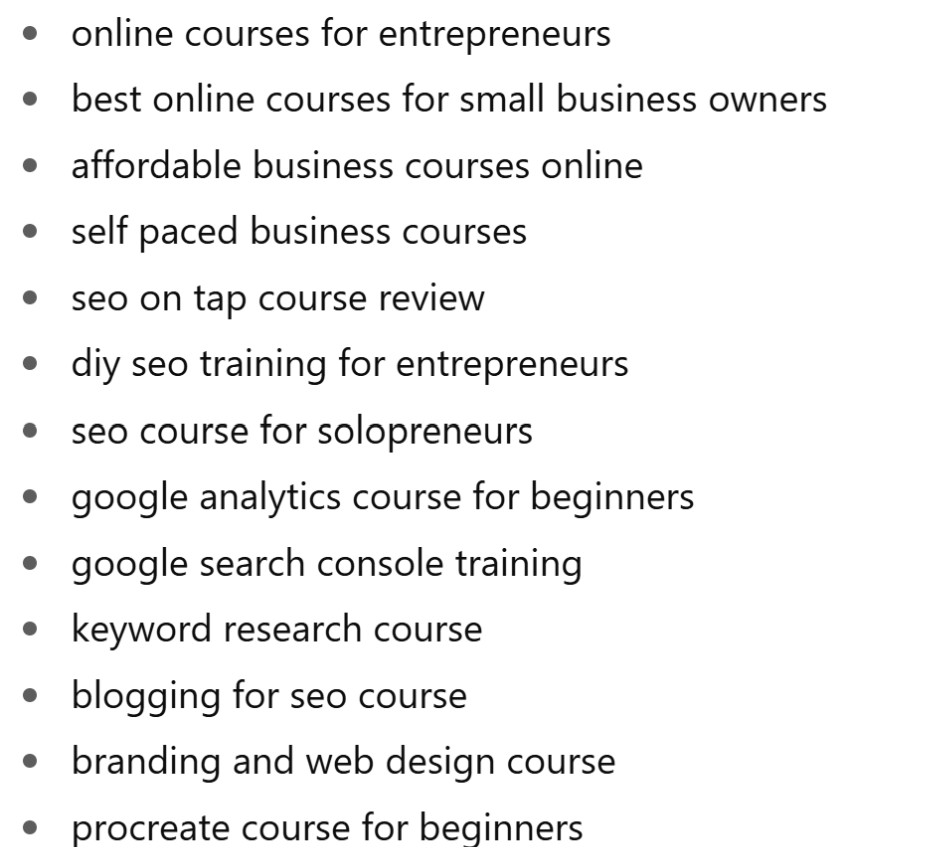
Step 3: Run a Keyword Analysis in Ubersuggest
Take those keywords and then copy paste them into ubersuggest bulk keyword analysis:
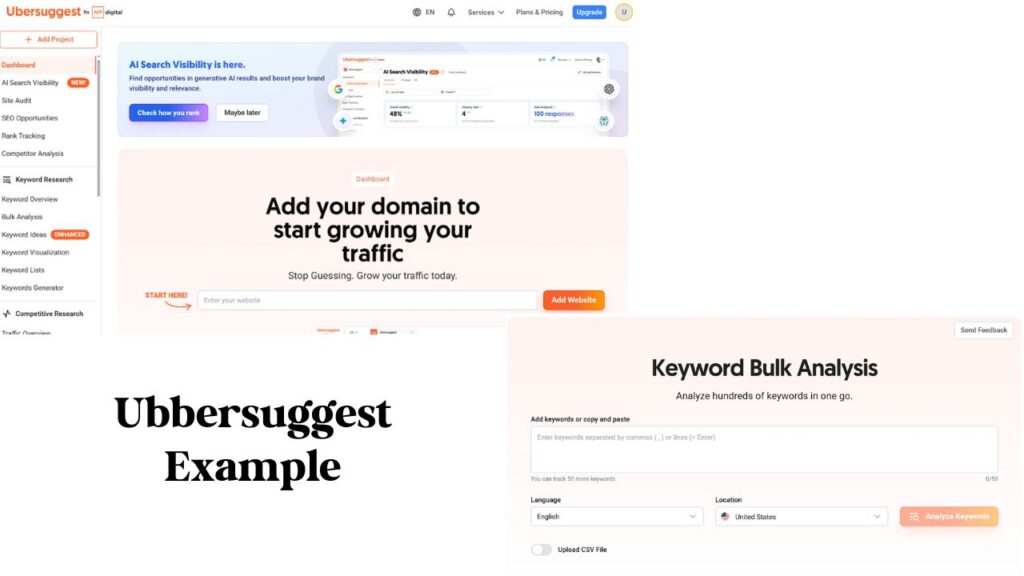
Copy those keywords into Ubersuggest’s bulk keyword analysis tool.
What I’m looking for:
- Search volume of at least 50
- SEO difficulty of 35 or less
- Relevance to the podcast episode
For example, when I recorded an episode about why I love courses, “best online courses for small business owners” was too competitive. But “online courses for entreprenuers” was a perfect fit—lower volume but targeted and relevant.
NOTE: if you cannot find one that is within those targeted metrics, you may choose to target a lower volume, but relevant keyword like “online courses for creative service providers”. You may also choose to pull relevant secondary keywords if you do have an episode where this makes sense: pinterest marketing course, learn SEO at home, DIY SEO Course, procreate course for beginners
Step 4: Draft a Blog Title and Intro
Once I know my target keyword, I go back to ChatGPT with this prompt:
Prompt: My main targeted keyword is “online courses for creative service providers” Can you give me 5 H1 blog titles that are related to the podcast and include the main targeted keyword as well as draft me an introduction paragraph that summarizes what the episode is about and utilizes that keyword?
This is an example of the output that I had for a blog I was working on:
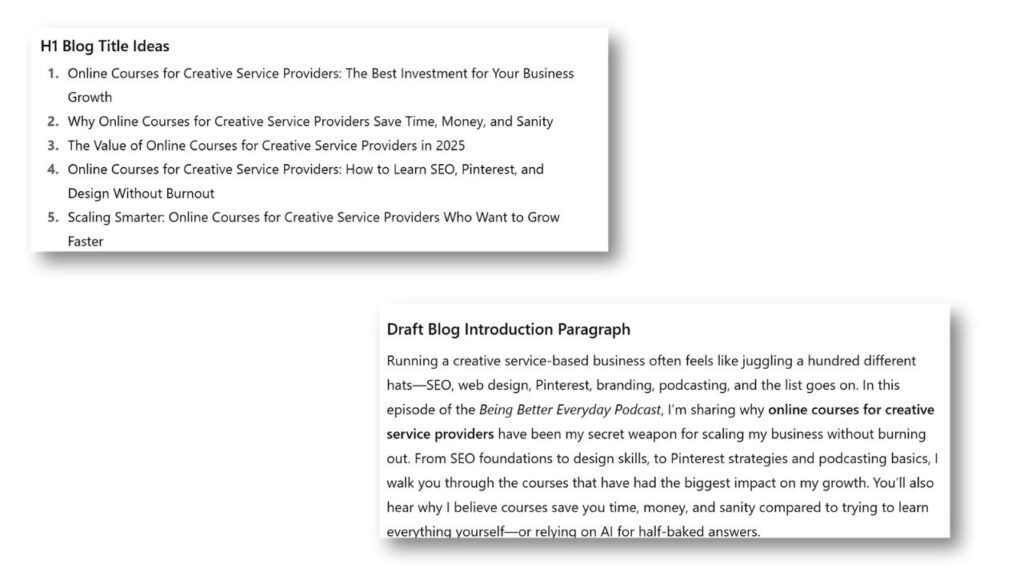
Step 5: Draft your Podcast Title and Description
Back in your choice of AI, again assuming it’s Chatgpt you will ask:
Prompt: Please draft my podcast title and description in a manner that will generate users to want to listen to the podcast episode while also targeting the keyword we discussed. Please generate in my brand voice, keeping it conversational and like a real person wrote it.
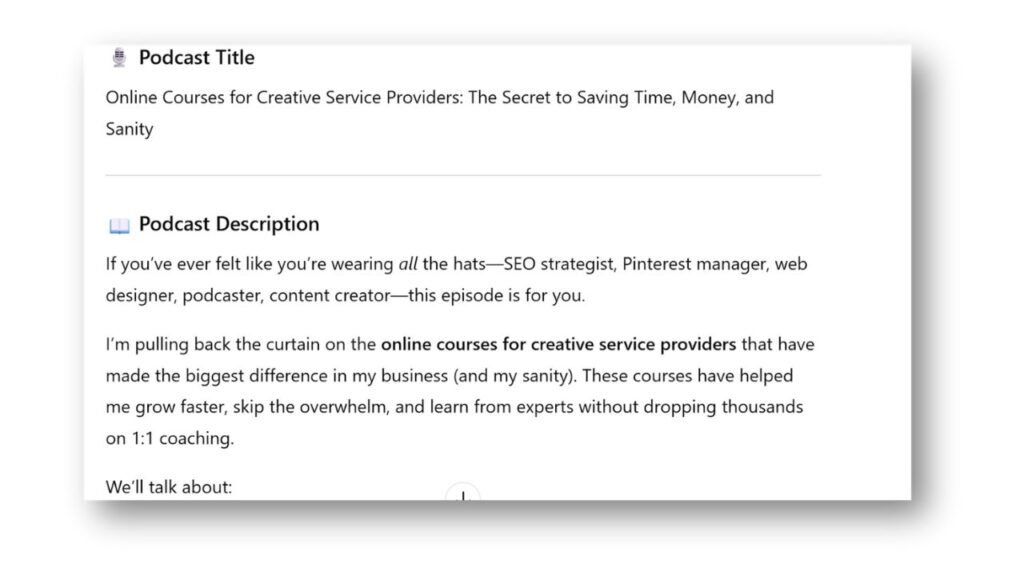
Staying in your brand voice is key. I have ChatGPT create both a podcast episode title and description that sound conversational while weaving in my target keyword.
Step 6: Draft your Blog Post
This is where ChatGPT shines. I paste my transcript and use this prompt:
Prompt: Okay with this podcast transcript I want turned into a blog post for my Podcast blog. Please use the H1 Header: “Online Courses for Creative Service Providers: My Top 5 Courses to Save Time and Money” Please: Summarize the key themes of the episode in a clear, conversational way (7th–8th grade reading level). Use my brand voice: supportive, authoritative and conversational, with “I” language. Include direct quotes from the transcript to make it feel authentic and storytelling-driven. Add SEO-friendly headers (H1, H2, H3) using keywords related to the episode End with a strong conclusion that ties back to the P&W Designs mission Provide a short list of suggested SEO tags and a meta description (150–160 characters). Optional (if it fits the transcript): Pull in 1–2 real stories from the episode. Add a “Practical Tips” or “Takeaways” section in bullet points. Include an FAQ section (2–3 questions moms might Google based on the episode topic). Please generate headers in title case and make sure the blog is Ai search friendly with some of the headers being questions.
This gives me a strong blog draft in my own tone—supportive, authoritative, but real.
Step 7: Confirm Internal and External Links
I make sure the blog links to at least two of my own resources (like my SEO Monitoring Tools Guide or Pinterest Marketing Guide). Then I layer in external links to authority sites that make sense.
Prompt: Okay, now with that same blog draft can you regenerate and integrate at least 2 internal links to relevant information on my site (bypwdesigns.com) and list out 5-10 suggested external links and include where with anchor text recommendations. Please make sure they are not from my competitors but more ‘authority’ based sites unless it makes sense otherwise.
This not only builds credibility but helps SEO.
Step 8: Refine for Brand Voice
Never just copy-paste. I always reread, tweak for flow, and make sure it sounds like me—not a robot. Also did you know that when you do use generative resources, it leaves a footprint? It’s important to not copy direct from those resources for that reason. Depending on where you are editing your information, you can always copy it as plain text.
Step 9: SEO Blog Inputs
Prompt: Please generate an SEO Title (based on best practices of less than 60 characters) related to the blog, as well as a meta description also based on best practices. Do not use the word “DISCOVER” or “Learn” to start the meta description. Keep it conversational to entice users to click through to learn/read. Also suggest an optimized URL slug.
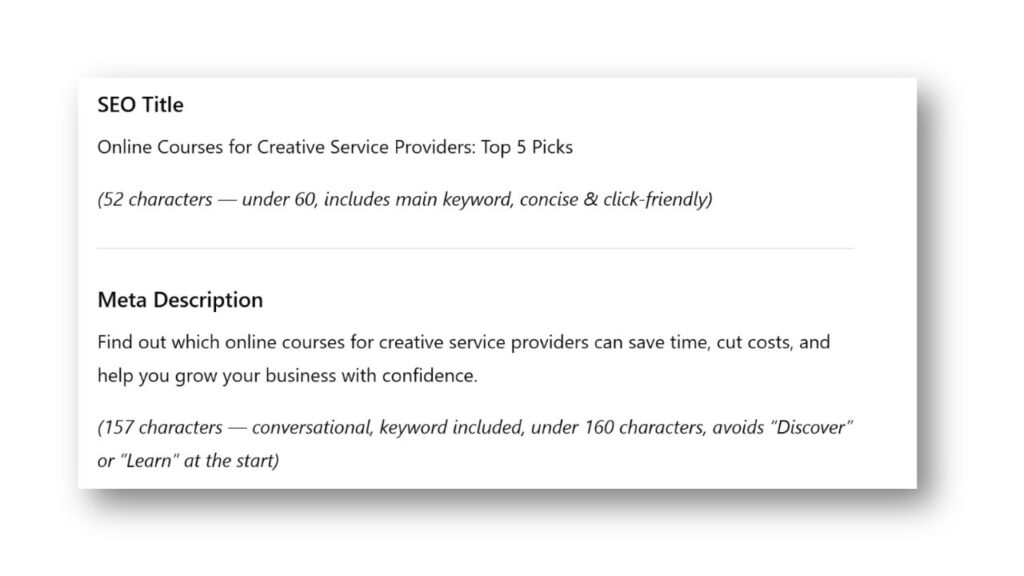
Want the Full Process, Checklist & a Video Walkthrough
I get how this process can be overwhelming and potentially feel like it’s not worth the effort, but trust me IT IS! You are generating good quality content on your podcast and you should want to give it the longevity it deserves. If you want to keep this handy, and see how I do it live, then drop your email in the form below and you will get it right to your inbox! It includes a quick checklist on the process I use for blogging and podcasting. PRO TIP – outsource this process to your VA to save even more time but make sure that you are still generating quality content 😉
Practical Tips to Make this Faster
- Keep a template for your ChatGPT prompts so you’re not reinventing them every time.
- Have a checklist ready (podcast + blog) to keep you on track.
- Don’t overthink keywords. Relevance matters more than volume.
Repurposing your podcast into a blog doesn’t need to be complicated. With the right system, you can do it in less than 30 minutes while boosting your visibility and connecting with the people searching for what you offer.
At P&W Designs, I’m all about helping entrepreneurs like you take what you already have and make it work harder for you—so you can spend less time stuck in the weeds and more time growing your business.
Be the first to comment